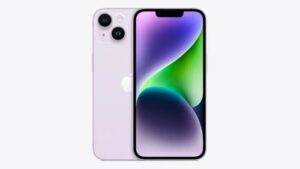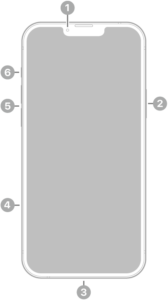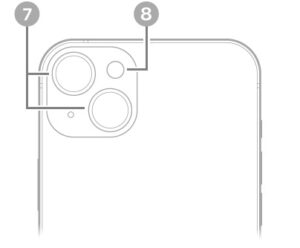Fake iPhones are widespread. We explain how to identify a fake iPhone 14 Plus and make sure you’re buying the real thing

How can I tell if an iPhone 14 Plus is fake? I don’t want to spend money on a counterfeit phone that won’t work properly.
There are lots of telltale signs that any product has not been made by Apple, and the iPhone 14 Plus – which has seen more than its fair share of fakes – is no exception.
QUICK ANSWER
- The best way to tell if your iPhone 14 Plus is fake is by entering it’s serial number into Apple’s "Check Coverage" website.
- This website will tell you if the iPhone is registered in Apple’s system, which all real iPhones are.
- You should also look for typos on the packaging and check if the phone is running iOS.
Did you find a deal on an iPhone 14 Plus that feels too good to be true? Chances are it probably is—you can find fake iPhone 14 Plus all over the internet. Unfortunately, scammers are getting better at manufacturing, marketing, listing, and selling these fake iPhones, making it more challenging to find an authentic product.
However, counterfeit iPhone 14 Plus have a few tell-tale signs that you can look for. Below, we’ll walk you through how to spot a fake iPhone 14 Plus. And if you discover your brand-new iPhone 14 Plus isn’t legit, we have tips and best practices to resolve the issue.
The first clue the iPhone 14 Plus is fake is that it costs
Obviously, price is the biggest clue. If it seems too good to be true, it probably is.
The base price for the iPhone 14 Plus is $899 (£949 / AU$1,579), which gets you 128GB storage.
The 256GB version of the iPhone 14 Plus costs $999 (£1,059.00 / AU$1,749) and the 512GB model will cost you $1,199 ( £1,279.00 / AU$2,099).
Take a good look at the box
One of the best ways to recognize a fake iPhone 14 Plus is by looking at its packaging. This is obviously easier to do in person, but you can also ask for close-up pictures. Apple, like other tech companies, takes great pride in its presentation. There will be no spelling or grammar errors with a legitimate iPhone 14 Plus box, nor will there be imperfections like pixellated or distorted images.
With its hinged lid, the fake iPhone 14 Plus box is easy to open. The top of the real iPhone 14 Plus box, on the other hand, must be shaken and wiggled free from the bottom half — a task that must be done fairly carefully when you’re dealing with $1000-plus of easily broken glass and electronics.
Make sure what’s inside the box is supposed to be there
Again, Apple’s packaging is uniform. Each product will feature the same exact packaging from box to box, with no deviations. iPhone 14 Plus is supposed to come with a Lighting to USB-C cable, and some documentation. If something is off — the Lightning cable is USB-A rather than USB-C, say — you know you have a fake.
Check Physical Details

Let’s assume you’ve got the possibly fake iPhone 14 Plus in your hand. Here are several things to check before you hand over the money. We can’t be certain it’s legitimate – it could just be a fantastic counterfeit – but these will rule out 95 percent of fakes.
Wrong material
The real iPhone 14 Plus has an aluminum body with matte-finish sides and a glossy glass back. In general, the handset feels cool, smooth, and solid. Fake iPhone 14 Plus have pconstruction that feels cheap.
Wrong size
The official dimensions of the iPhone 14 Plus, as detailed on Apple website, are:
- Width: 78.1 mm (3.07 inches)
- Height: 160.8 mm (6.33 inches)
- Depth: 7.80 mm (0.31 inch).
This might seem like a simple detail for a counterfeiter to get right, but you’d be surprised: many fakes are thicker than the real thing, because it’s so hard to match Apple’s engineering capabilities.
If you’ve got scales, check the weight too. The iPhone 14 Plus weighs 203 grams (7.16 ounces. A fake iPhone 14 Plus may not quite as heavy as the real thing.
Check the controls
Fake iPhone 14 Plus often have weaker construction and a somewhat different design from genuine versions. As a result, you must thoroughly examine the iPhone’s outside. Here are some things you should look out for:
- At the top of the iPhone 14 Plus are a front-facing built-in stereo speaker and microphone.
- On the top left of the phone is the Ring/Silent switch.
- Below the Ring/Silent switch are the iPhone Volume buttons.
- Below the volume buttons you’ll see a tiny hole. This is the SIM tray (available on models purchased outside the U.S.)
- On the right is the iPhone Side button.
- Finally, between the built-in bottom microphones and stereo speaker, is the Lightning connector port.
Your iPhone 14 Plus is probably a fake if any of these controls are missing or positioned in an unexpected location.
Check the back of the phone

On the back of your iPhone, you should see two cameras. The tiny hole is the microphone, just like near the front camera. There is also a small textured circle; this is the camera’s flash. Check these are present, and also that they work.
There should also be an Apple Logo in the middle of the phone rear. Fake Apple iPhone 14 Plus may have differently positioned logo, or no logo at all.
Check the color
The color of the phone can also signal to you whether it’s fake or genuine. The iPhone 14 Plus colors are Midnight, Starlight, Blue, Purple, Red and Yellow. If you see iPhone 14 Plus in any other color than these: it’s fake, so don’t buy it.
Power on the phone and try it out
Fakes are most easily identified by their inability to replicate the interface and general user experience of a genuine iPhone 14 Plus. Start it up and swipe through a few screens and apps: the touchscreen should respond near-instantaneously to your swipes.
Try to invoke Siri by pressing on the Side button; if she doesn’t answer, it’s either a defective iPhone or a fake. Next, check out the icons on the home screen: For example, if you see a Google Play app, it’s not an iPhone. Or try tapping the App Store icon; if doesn’t go to Apple’s App Store, it’s not an iPhone.
Verify the serial number
Apple runs a website that lets users check if their products are still under warranty. This is great for checking real products, of course, but it also has the added benefit of telling you when you’re using a fake product.
To use the site, you’ll just need your iPhone’s serial number. To find your iPhone’s serial number, open the Settings app and go to General > About. Here, you’ll find the serial number of your iPhone. Now, long-press on the serial number and tap Copy.
Once you copy the iPhone’s serial number, head to the Check Coverage website and enter it into the field at the top, then fill out the CAPTCHA and click Continue. Then, wait a few seconds for Apple to pull up the record for your iPhone from its database.
See the model and purchase date displayed on the screen and compare them to yours. If both credentials are accurate, your iPhone is genuine. However, if Apple says it has no information for a device with this serial number, it’s probably a counterfeit. This is how you can tell if your phone is an authentic iPhone 14 Plus or a counterfeit one.
Already bought a counterfeit or fake iPhone 14 Plus? What now?
It’s not always possible to check iPhone’s legitimacy with online sellers. Still, even if you end up with a dud handset, it’s not necessarily the end of the road. So, what should you do once you have identified your new iPhone 14 Plus is fake? If the online shop or Ebay seller is still active, a return or refund should be attempted. Usually sellers can be persuaded to reimburse the purchase price, although if some time has passed before you recognised the counterfeit nature of the product it may be a little more difficult.
To return an item for a refund on Ebay you should follow these steps:
- Find the item in your Purchase history.
- Select Return this item.
- Give your reason for the return. You can add images to back up your claim.
If you purchased the fake iPhone 14 Plus from somewhere else a similar attempt should be made to return them for a refund. Your payment method can offer a level of protection.
Try to avoid paying in cash due to the lack of a paper trail and the inability to recover payment. Credit cards are better than debit, cash cards, or bank transfers in this regard too. Your bank can usually dispute a transaction to obtain a chargeback. Always check your specific bank’s terms and conditions and you may have to send in a dispute form to initiate the process. PayPal also offers inclusive buyer protection when buying through them, specifically covering knock-off goods and used products.
Most digital means of payment offer some protection against fraudulent merchants.
We’d also recommend trying to obtain proof of purchase and a detailed item description from the seller to act as evidence, just in case. It’s also a good idea to familiarize yourself with the seller’s reputation online via reviews and forum posts before committing to a purchase. A quick Google search ahead of time might save you lots of agony after the fact.
With all of the above in mind, you’re now well prepared and protected against ending up with a fake iPhone 14 Plus. The chances of encountering one are slim, but it’s always best to be prepared.
Submit A Comment